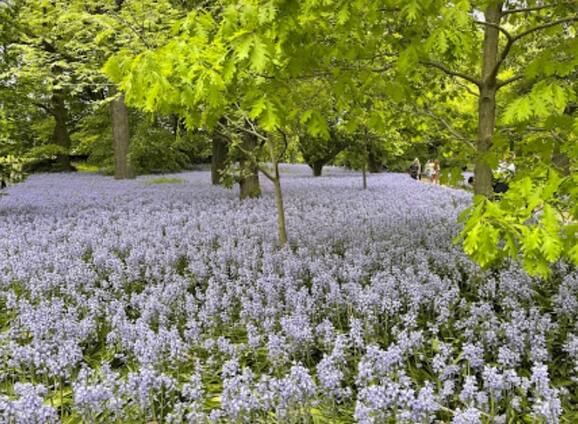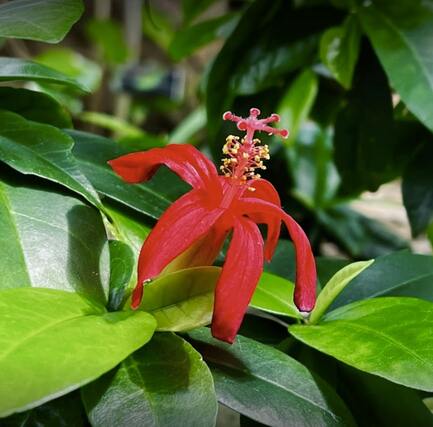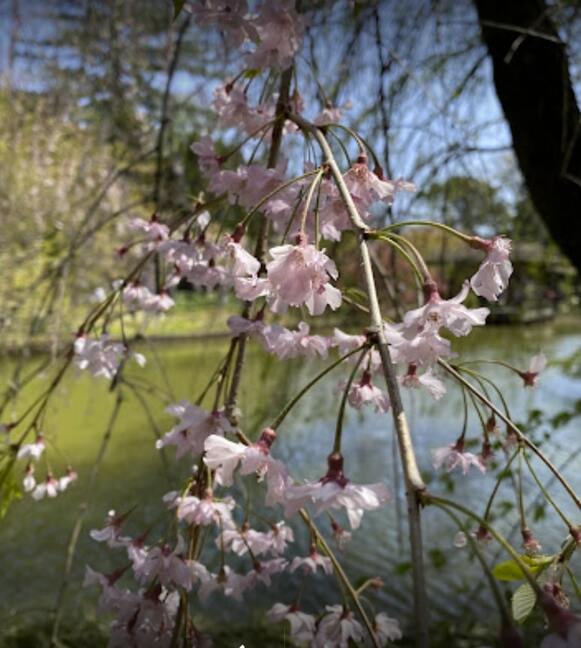
Brooklyn Botanic Garden is a beautiful botanic garden in New York City. The garden was founded in 1910, built on the Mount Prospect Park land situated in central Brooklyn. Brooklyn Botanic Garden lies adjacent to Prospect Park and Brooklyn Museum.
Introduction
Brooklyn Botanic Garden is a unique opportunity for plant lovers to connect with the world of nearly 1400 taxa of plants that the botanic garden holds. The 52-acre urban botanic garden is a delightful experience for those curious about the world of plants and their roles in the environment.
The Brooklyn Botanic Garden instills a sense of appreciation and stewardship of the plants’ environment, caters to people of all ages, and educates them about the conservation and sustainable environment for these plants.
The botanic garden promotes its educational programs and establishes an understanding of conserving regional plants and special plant communities while showcasing the beautiful taxa with emphasis on their research.
History
Brooklyn Botanic Garden has its roots in the earliest history of New York City, as it was established when the city was developing into a stunning landscape of paved roads and tall buildings. The need for developing this botanic garden arose to ensure that some green space remains among concrete and pavers. The Brooklyn Botanic Garden represents an incredible example of horticulture and urban gardening.
1897-1911
In 1897, The New York legislation reserved 39 acres for this botanic garden, but now the Brooklyn Botanic Garden is built on 52 acres.
The botanist Charles Stuart Gager founded the botanic garden and was appointed its director. Olmsted Brothers laid out the original site plan for Brooklyn Botanic Garden.
The botanic garden officially opened on May 13, 1911, and the first display was showcased to conserve native plants. The original Local Flora Section was designed and laid out by the research Taxonomist Norman Taylor, who also included wildflower beds that were arranged by evolutionary relationships and plant families.
1912-1989
Harold Caparn was appointed as the Brooklyn Botanic Garden’s landscape architect, who designed it for the next three decades. In 1914, the Children’s Garden program began, which offered a vegetation garden for children to plant their own food plants.
In 1915, the designer Takeo Shiota completed the Japanese Hill-and-Pond Garden, which was one of the first Japanese gardens in the USA.
In 1928, the Cranford Rose garden was established as a gift from Mr. and Mrs. Walter V. Cranfold. Even though it has been renovated multiple times, several original plants remain in this garden.
In 1982, the first Sakura Matsuri was held in the Brooklyn Botanic Garden, and the outreach Project Green was created, serving elementary classes in Brooklyn’s schools.
1990-2022
In 1990, the New York Metropolitan Flora Project, a 20 years survey of the plant species in the area, was launched.
The Brooklyn Academy of Science and the Environmental was founded in partnership with Brooklyn Botanic Garden in 2003. In 2015, the new one-acre Discover Garden was opened for children, featuring interactive plant exhibits in various habitats like marsh, woodland, and meadows.
Elizabeth Scholtz Woodland Garden opened in 2020, designed to inspire urban gardeners with its walled and open-air garden featuring plants thriving in shady and relatively dry conditions.

Plants in Brooklyn Botanic Garden
1. Angel’s Trumpet
This evergreen plant has many branching trunks, typically 8 meters in height. This plant’s flower, seeds, leaves, and stems contain scopolamine, which is why they are used to make medicines. This toxin also makes this plant highly poisonous to humans and pets.
2. Harlequin Glory Bower
This plant is native to Japan and China and has an open growth that can reach up to 10 feet in height. The plant produces bright-colored fruits and lovely flowers and offers a display of white flowers that resemble jasmine in late summer.
3. Queen Red Lime
This gorgeous plant is appreciated for its unique flower coloring. The flowers are red and have lime tips on each petal. It is an annual hybrid flower growing throughout the United States.
4. Blackberry-Lily
Blackberry lily is also referred to as leopard lily, and this short perennial plant is native to Russia, Japan, and China. It produces flowers that are orange, yellow, and red in color.
Gardens and Conservatories in Brooklyn Botanic Garden

1. Water Garden
The Water Garden at Brooklyn Botanic Garden offers a small wetland environment that lets visitors through a meandering path into a diverse habitat of shrubs, trees, ferns, and other unique plants. Visitors can observe different species of plants like black tupelo, sedges, rushes, etc.
The stream and pond in this Water Garden, known as Belle’s Brook, are a part of a conservation project and allow the recirculation of fresh rainwater, easing the burden on water consumption.
2. Herb Garden
The herb garden devotes small orchards to plants from all over the world. Several medicinal and useful plants are grown in these decorative beds. Springs allow cherries, apricots, and apple trees to blossom, and autumn brings pumpkins and squashes. Summertime brings ripening berries, lush cole, and multiple flowers.
The Herb garden also showcases a composting area and window boxes to inspire home gardeners. Besides that, signage is available that highlights the uses of these food plants and more gardening advice.
3. Rock Garden
This was among the first rock gardens opened in 1917 and is nestled in the hillside, which lies along the western boundary of Brooklyn Botanic Garden. The Rock Garden displays a variety of plants that flourish in rocky and fast-draining soils, such as succulents, tulips, heaths, etc.
In spring, the first flowers that emerge in Rock Garden are daffodils, tulips, azaleas, and heaths. Summer brings poppies and anemones; in autumn, one can observe stone crops and fall foliage.
In winter, the rock garden showcases the beautiful witch-hazels and conifers.
Conclusion
The Brooklyn Botanic Garden inspires its visitors with education and conservation of the plants it holds. No matter your age group, this botanic garden has something to offer everyone.
